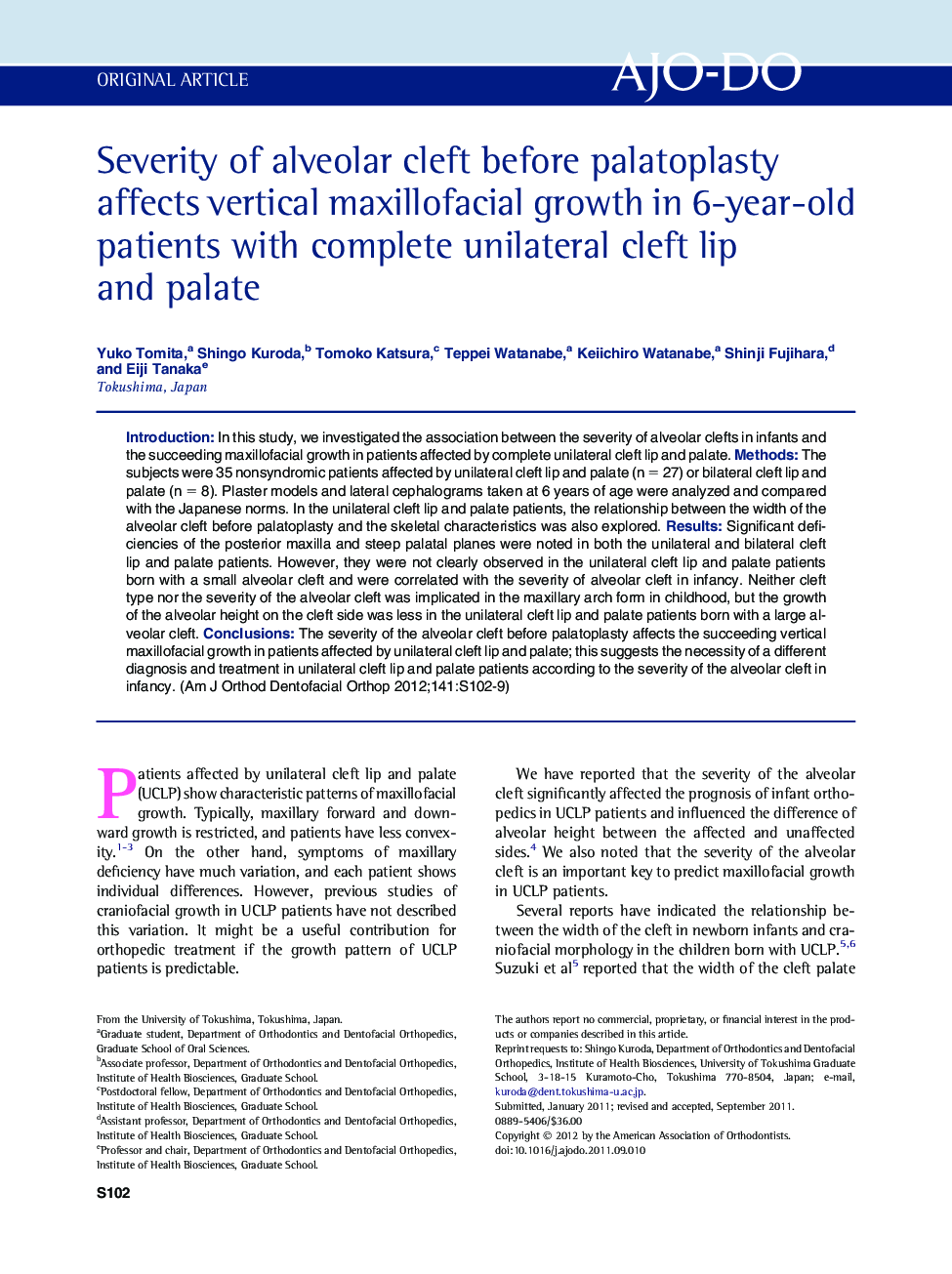| Article ID | Journal | Published Year | Pages | File Type |
|---|---|---|---|---|
| 3117535 | American Journal of Orthodontics and Dentofacial Orthopedics | 2012 | 8 Pages |
IntroductionIn this study, we investigated the association between the severity of alveolar clefts in infants and the succeeding maxillofacial growth in patients affected by complete unilateral cleft lip and palate.MethodsThe subjects were 35 nonsyndromic patients affected by unilateral cleft lip and palate (n = 27) or bilateral cleft lip and palate (n = 8). Plaster models and lateral cephalograms taken at 6 years of age were analyzed and compared with the Japanese norms. In the unilateral cleft lip and palate patients, the relationship between the width of the alveolar cleft before palatoplasty and the skeletal characteristics was also explored.ResultsSignificant deficiencies of the posterior maxilla and steep palatal planes were noted in both the unilateral and bilateral cleft lip and palate patients. However, they were not clearly observed in the unilateral cleft lip and palate patients born with a small alveolar cleft and were correlated with the severity of alveolar cleft in infancy. Neither cleft type nor the severity of the alveolar cleft was implicated in the maxillary arch form in childhood, but the growth of the alveolar height on the cleft side was less in the unilateral cleft lip and palate patients born with a large alveolar cleft.ConclusionsThe severity of the alveolar cleft before palatoplasty affects the succeeding vertical maxillofacial growth in patients affected by unilateral cleft lip and palate; this suggests the necessity of a different diagnosis and treatment in unilateral cleft lip and palate patients according to the severity of the alveolar cleft in infancy.
